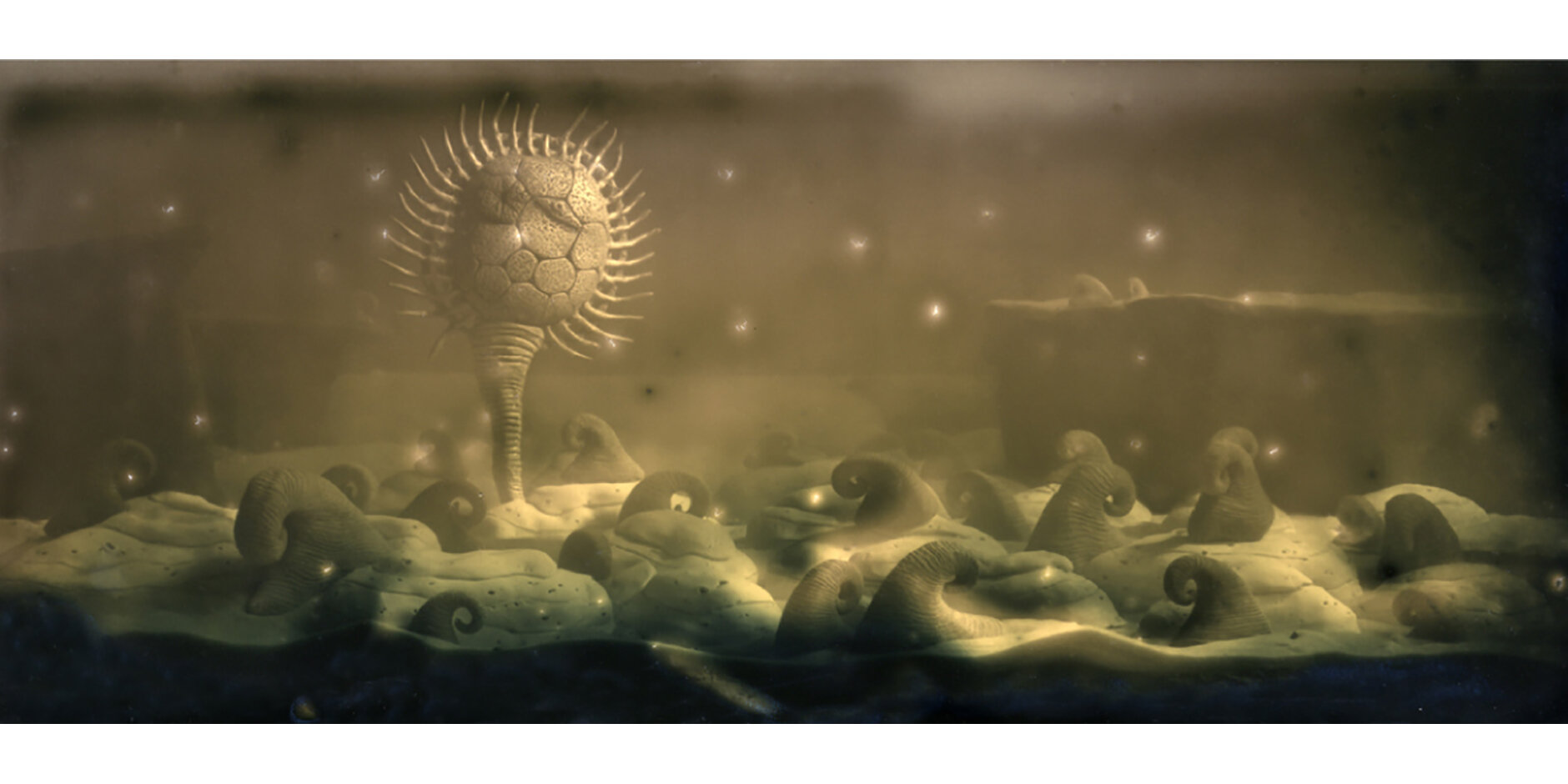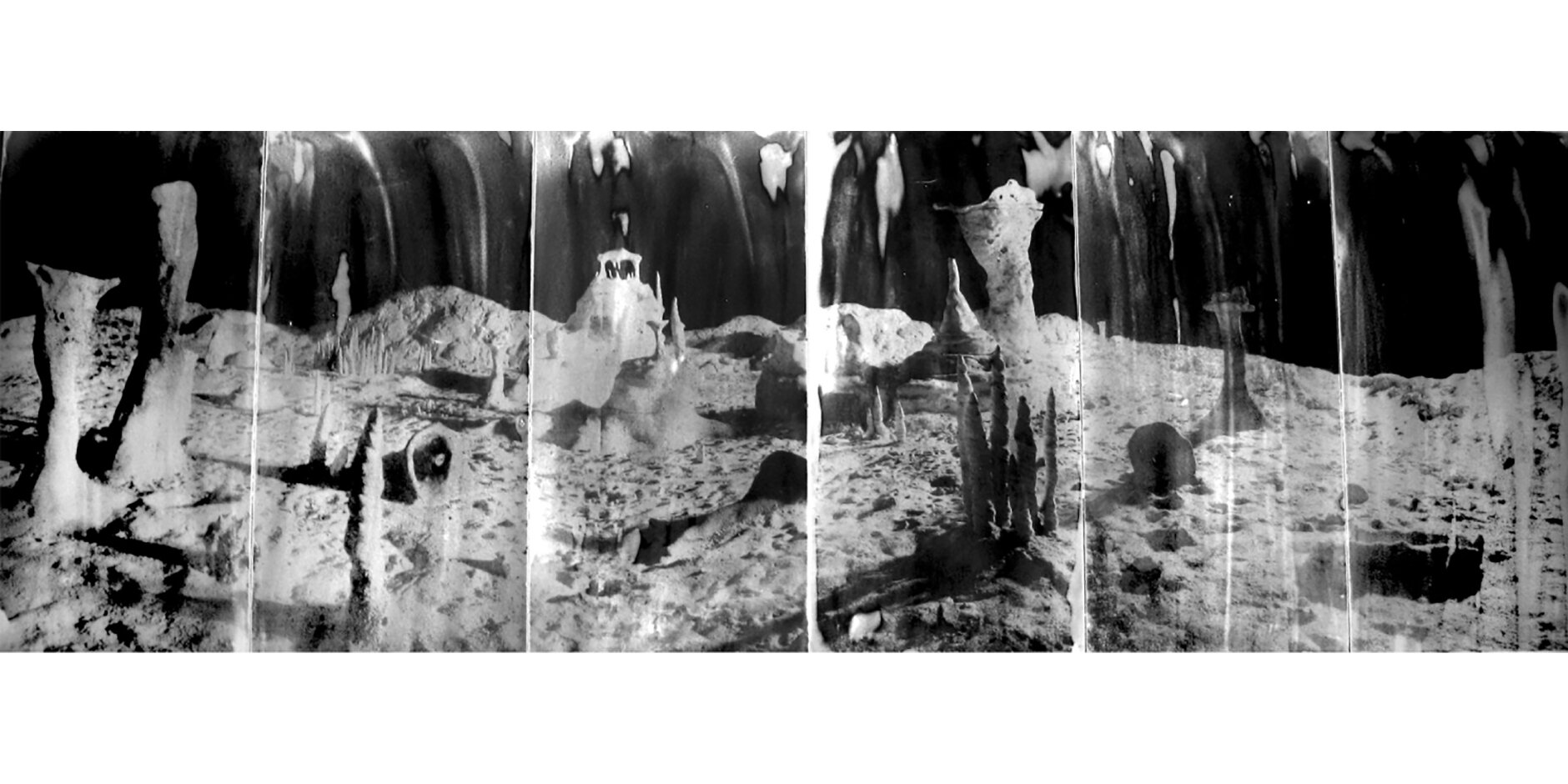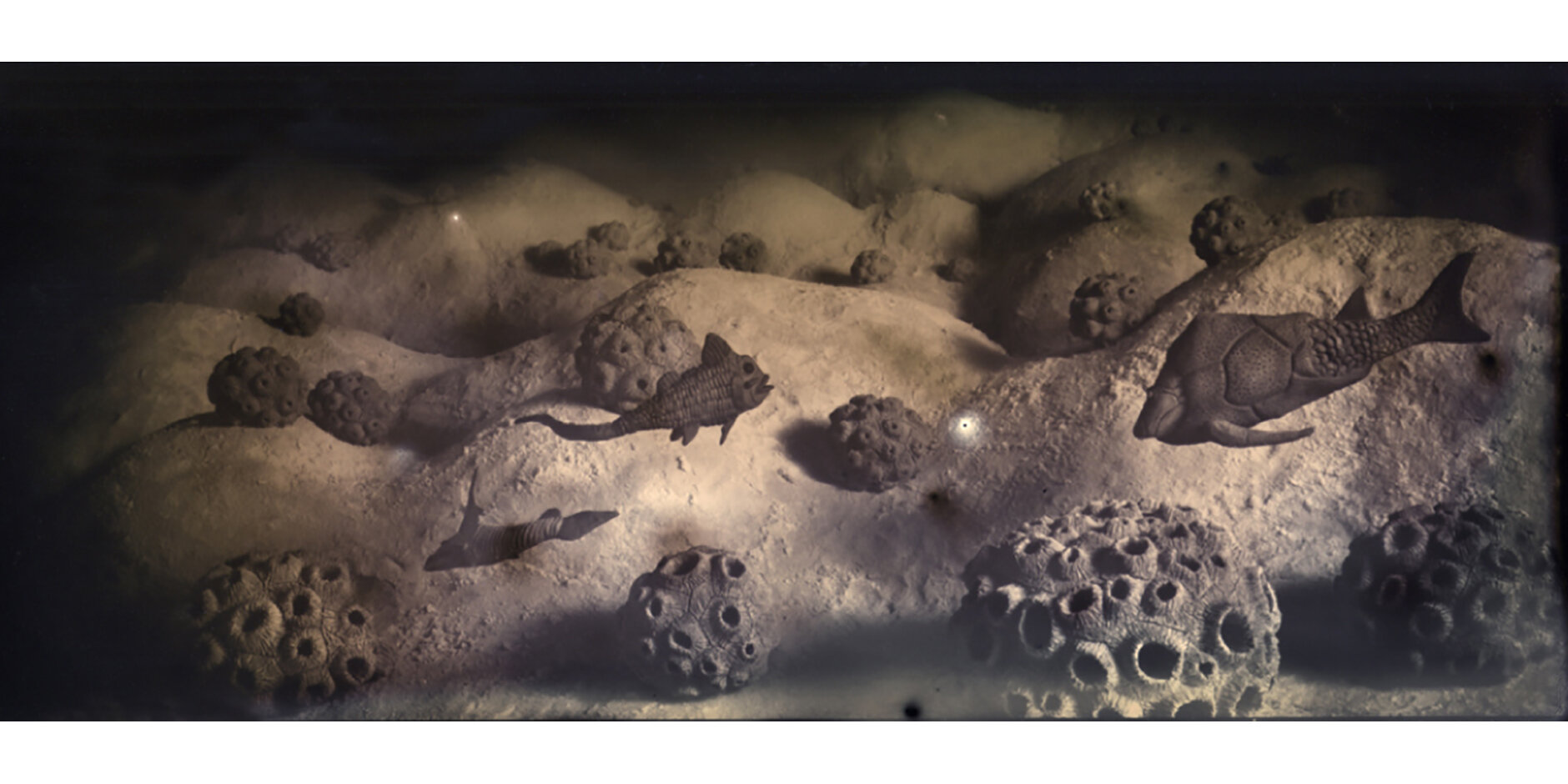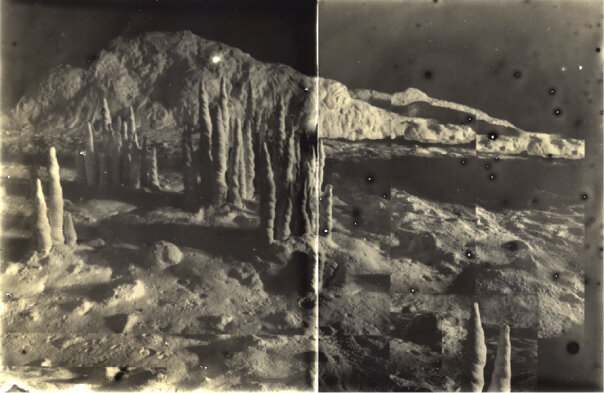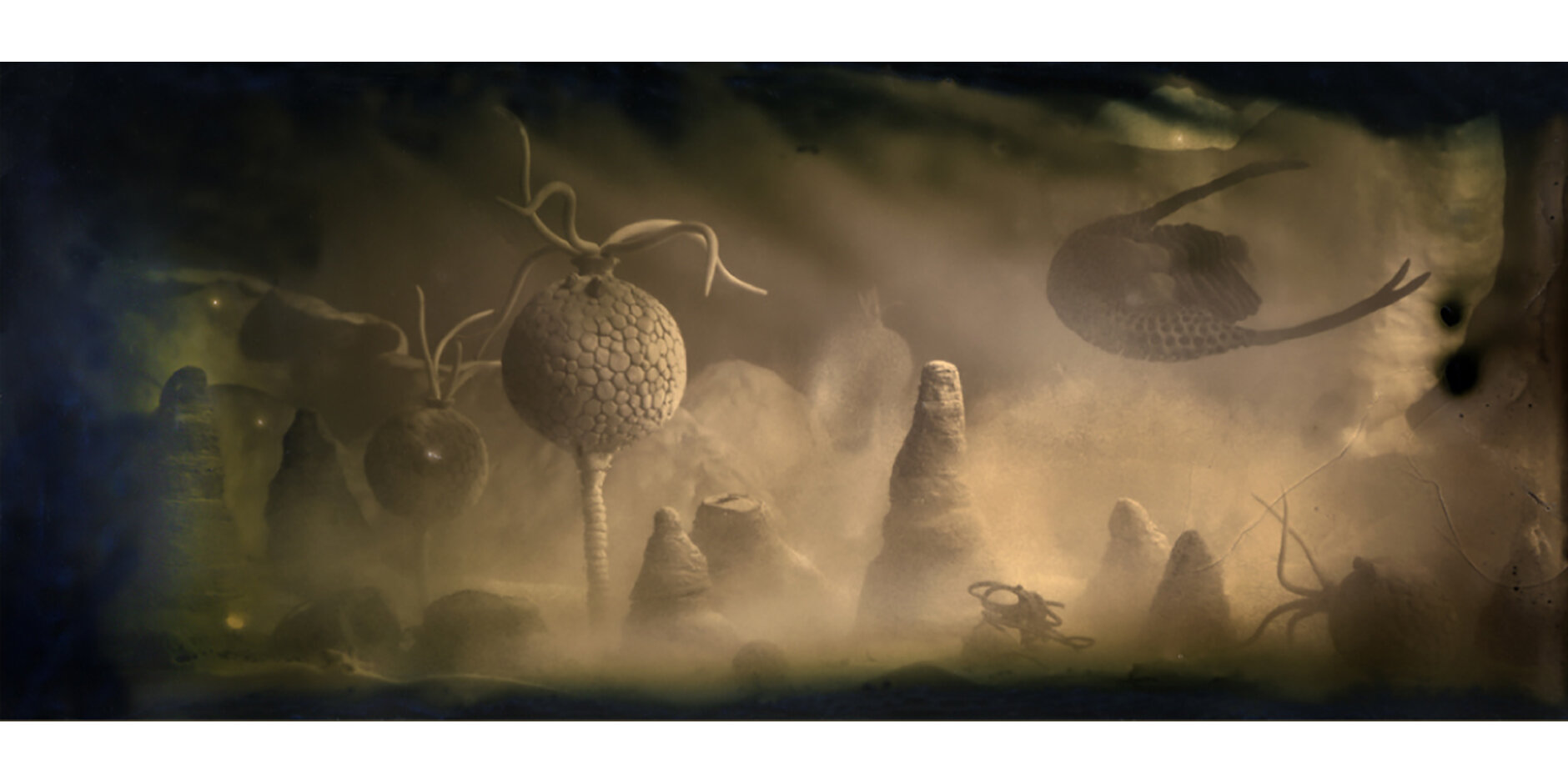AMoCA Collection | Organic Remains of a Former World, Plaster, sand and clay — diorama, 83.5” x 70.5”, 2007
RAIR | 2005-06
Alison Carey | Chicago, IL
Alison Carey’s work explores the landscapes of the Earth, Moon and ocean. Over the past 18 years her photography has been greatly influenced by Earth science, specifically the biology, paleontology and geology of our planet and the geology of our Moon. Carey is an associate professor at Columbia College Chicago where she has been teaching photography for the past nine years. She has an MFA from the University of New Mexico and a BFA from School of Visual Arts in New York City. Alison exhibits her work in art and science museums throughout the United States.
In 1959 the soviet space probe Luna 3 sent back the first images of the far side of the moon. The photographs of the mountainous terrain, although fuzzy and indistinct, illuminated the dark and mysterious landscape previously explored only in the collective imagination. It is this imagined lunar landscape, rooted in early scientific speculation, mythology, and our ever-burning desire to know the unknown that inspires Alison Carey's fantastical 'lunar' panoramas. Through photography, the model landscapes, built from clay, cardboard, tinfoil and styrofoam, are transformed into records of distant and nameless sites. The geology of Carey's moonscapes- impact craters, moon rocks, and volcanoes- refer to actual images taken of the moon's surface as well as the artist's own imagined morphology of the moon's topography. Carey maps her landscapes using panoramic photo sequences that she assembles into composite images set against black backgrounds. Stylistically, the images refer to panoramic mosaics made from photographs of the moon's surface taken during the Apollo missions of the 1960's and 70's. Carey's photographs, while invoking a kind of 'space race' nostalgia, use non-traditional printing techniques, heightening the ambiguity as to when they were taken. The images instead invoke multiple points in time. Acting as non-linear time machines, the photographs swing between past and future, known and unknown, named and nameless. In a sense transporting the viewer into a space without time.
—Johanna Fauerso




